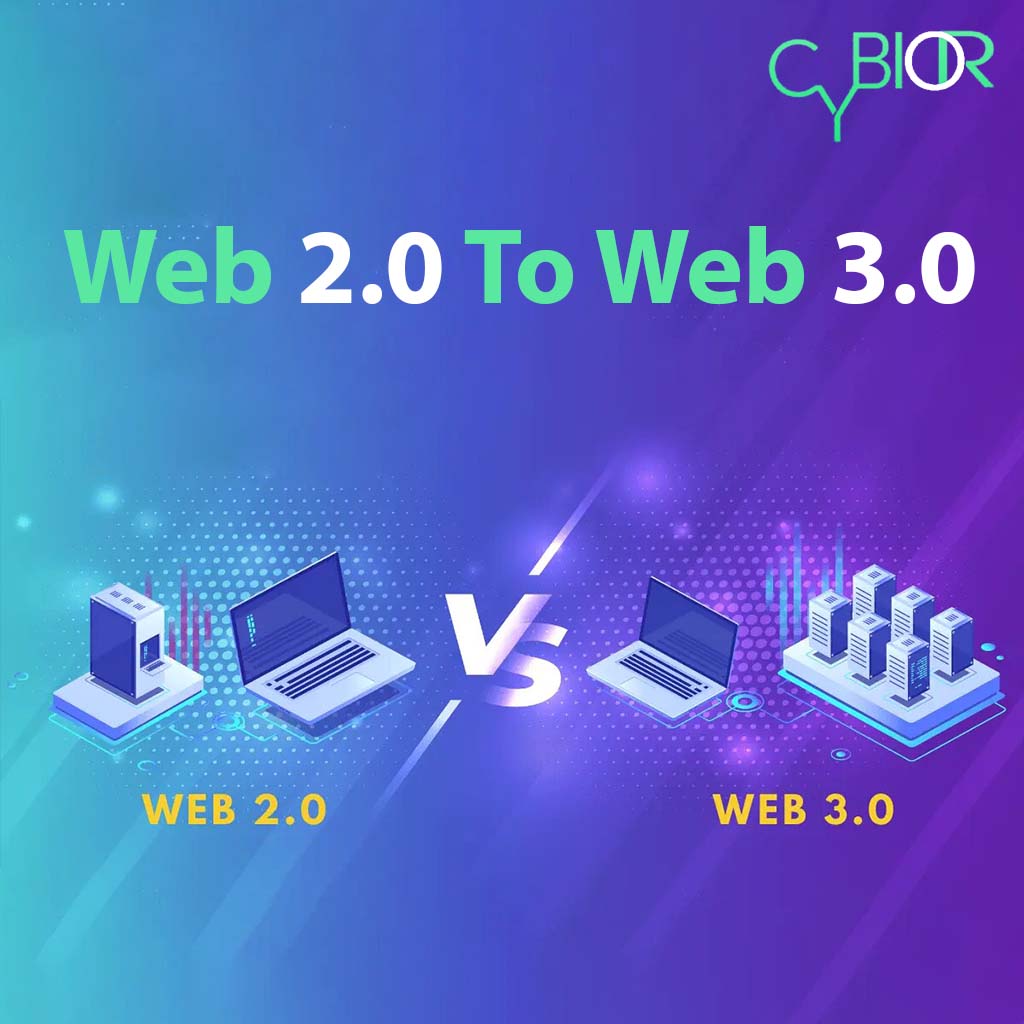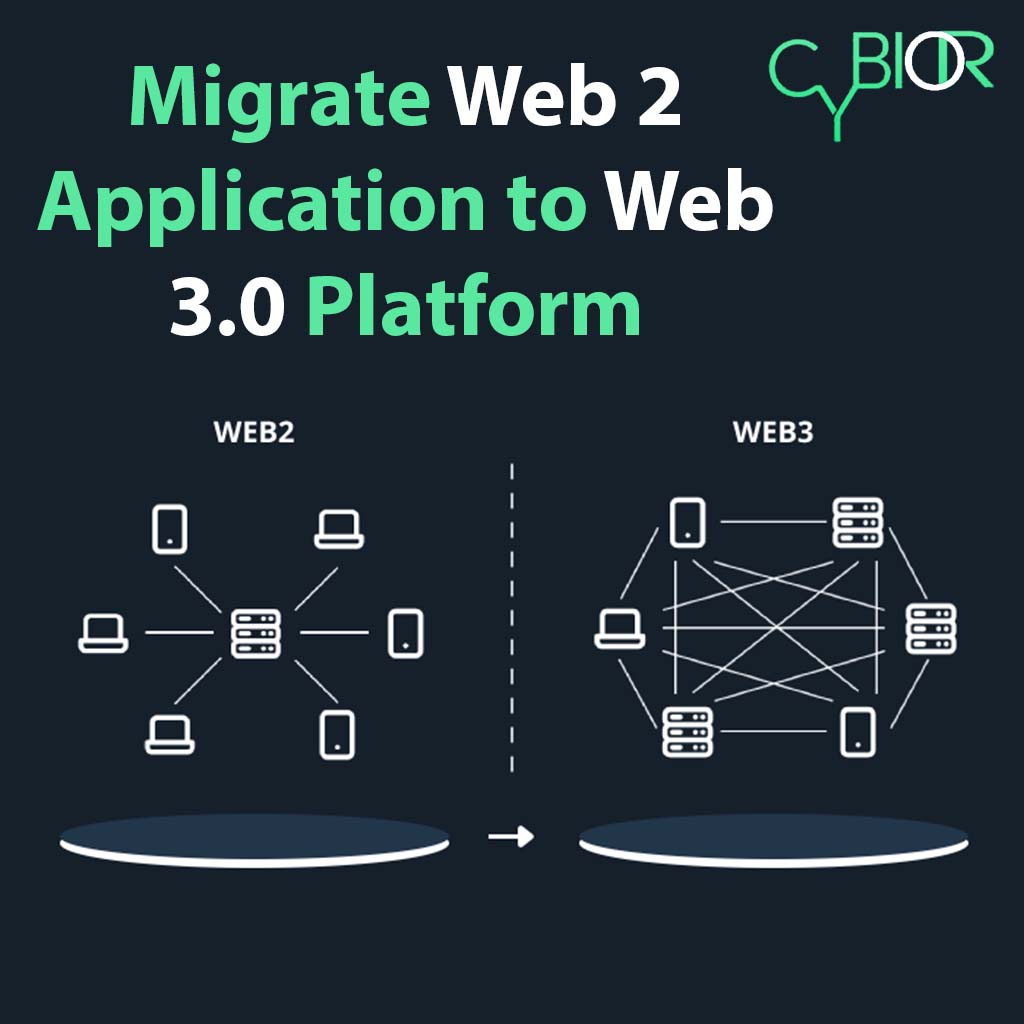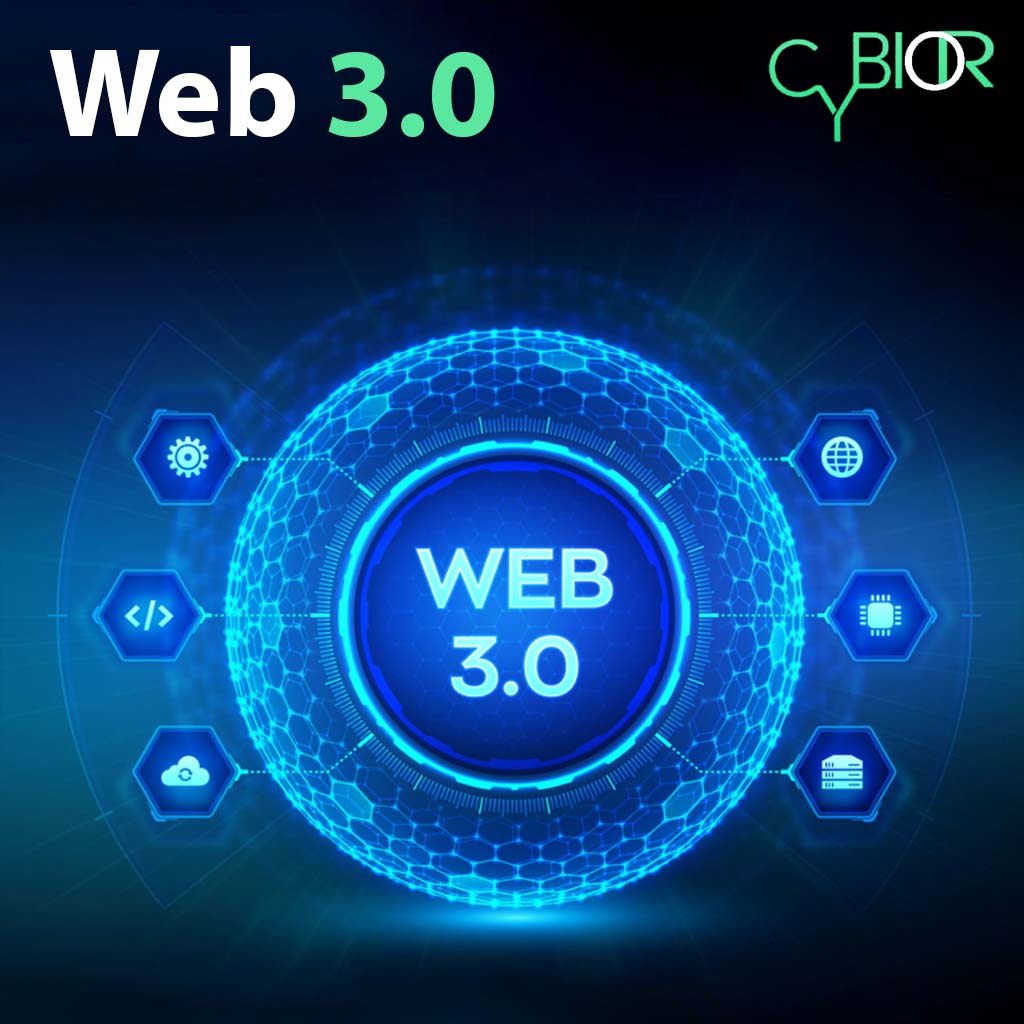
Web 2 is based on the concept of centralization, which has attracted billions of people worldwide to the World Wide Web (WWW). Centralization has benefited large corporate entities as it empowers them to manage all content on the internet.
Web 3 was launched to break the traditional centralized system of the internet. Web 3 technology follows the concept of decentralization, meaning Web 3 gives ownership rights to individuals instead of corporations. Web3 is based on public blockchains, a record-keeping system for facilitating cryptocurrency transactions. Web 2 to Web 3 migration is the need of the hour, as it can be the possible future version of the internet.
What is Web 3.0
Web 3.0 is the advanced world wide web version that empowers individual internet users. The significant attractiveness of Web 3.0 is its decentralization feature which means that consumers will no longer depend on intermediaries like Google, Facebook, or Apple to get access to any information. Web 3.0 empowers individuals to own and govern sections of the internet. It uses cryptocurrencies, blockchains, and NFTs to give ownership power back to its owners.
No permission is required on web 3.0, which eliminates central authorities’ supremacy, which restricts the free following of information. The dependency on intermediary parties to perform a virtual transaction is also eliminated on Web 3.0. Such central authorities or intermediary parties primarily collect data for other agencies. Web 3.0 protects user privacy, thus making the internet a secure platform to share information.
DeFi is the term used for decentralized finance and is a significant component of Web 3.0 gaining popularity. DeFi performs real-world financial transactions on blockchains without depending on financial institutions, banks, or governments. Major corporations and venture capital firms worldwide are polling their funds in Web 3.0 to build a robust decentralized economic model.
Core ideas and features of Web 3.0
- Permissionless: Everyone enjoys the same power and equal access to participate in Web 3.0. No one is gets excluded or restricted from the use of Web 3.0.
- Decentralized: Large portion of the internet is controlled and owned by centralized entities. Web 3.0 breaks this chain and distributes ownership and authority to the builder and its users.
- Native Payments: Web 3.0 introduces and uses cryptocurrencies for spending, receiving, or sending money online instead of using traditional banks, financial institutions, or payment processors.
Avoids Third-Party Reliance: Instead of relying on trusted third parties, Web 3.0 operates using incentives or economic mechanisms to deliver benefits.
Core ideas and features of Web 3.0
With the inception of Web 3.0, the whole meaning of the internet has changed. Web 3.0 features are more advanced and different from Web 2 technology. The importance and distinctive features of web 3.0 can be divided into the following categories.
Ownership Rights:
Web 3.0 allows you to retain the ownership of your digital assets. For example, you are playing a game on Web 2. While playing the game, if you buy an in-game item, then it is directly linked to your game account. The game creator can delete or suspend your game account, and all your purchases immediately fall to zero value. Or, if you have stopped playing the game, your game items will become useless your investment will become zero.
Web 3.0 overcomes the problem by giving direct ownership rights in the form of non-fungible tokens (NFTs). The game creator or any other authority has no right to take ownership of your game account or to delete/ suspend it. If you have stopped playing the game, you can sell or trade your in-game items on an open market or recoup their value.
Authority Over Content:
Content creator rights of ownership are limited in Web 2 technologies. Platforms that showcase content have complete authority to accept or reject. Balance of power in ownership is crucial in creating an effective information-sharing environment. Many content creators use internet platforms as their primary source of income.
OnlyFans is a user-generated platform with a subscriber base of over one million users. The medium showcase all kind of content, including the explicit one too. In August 2021, the website announced to ban on sexually explicit content, which sparked anger amongst the content creators of the platform. According to the content creators, this move of the platform is an attack on their income streams. After the users’ severe reaction, the website quickly reverses its plan of banning any content. This particular issue highlights the limitations of Web 2 creators. You will lose your reputation and hard work if you leave the platform or the platform is closed.
Your content or data lives on the blockchains at Web 3.0. You take your reputation and work with it when you leave a platform. Web 3.0 allows you to find a new platform that aligns with your values and shift all your work to a new interface. The essential requirement for content creators of Web 2 is to trust the platform and follow its rules. But Web 3.0 gives complete authority to content creators to build and retain ownership rights over content.
Decentralized Autonomous Organizations (DAOs)
Web 3.0 gives you the power to own your data and empowers you to hold the platform as a collective entity by using tokens that act as shares in a company. Decentralized Autonomous Organizations (DAOs) make ownership of any organization decentralized, allowing you to make your own decisions about the future.
DAOs are contracts that permit decentralized decision-making over a platform or pool of resources (tokens). Users who own the tokens can vote on how resources should get spent, and the given code automatically provides the voting results.
Difference between Web 2 to Web 3

Web 3 is the possible future of the internet that will completely take over Web 2. The advanced technology empowers internet users and motivates them to migrate Web 2 applications to a Web 3 platform. Some significant differences between Web 2 and Web 3 are discussed below.
Details | Web 2 | Web 3 |
Basic Technology | HTML5, CSS3, AJAX, Javascript | Decentralized Protocols and Machine Learning, Artificial Intelligence |
Purpose of Inception | Community Development, Providing Platforms for sharing information | Empowering Individual Users, Giving Ownership rights |
Working Principles | Tagging, Enhancing End-User Experience | User empowerment by giving them security, privacy, and trust |
Applications Compatibility | Web Applications | Smart Applications (based on Machine Learning and Artificial Intelligence) |
Ownership of Data | The platform owns the data and rights to delete or suspend | Individual entities have ownership over the data |
Advertising Strategy | Interactive Advertising | Behavioral Advertising |
3D Graphics Usage | No | Yes |
Key Technology Features of Web 3
Web 3.0 is still not wholly defined till now, but some disguising features that make it unique and different from Web 2 are discussed below.
Allows Unprecedented Ownership Rights:
Owners have been given absolute rights over their data and solely their will to retain or sell it on Web 3.0. It is made possible through decentralized data networks that directly shift the power of data ownership to the owner instead of giving it to the platform. Digital data is typically created on desktop computers, mobile phones, electronic appliances, sensors, automobiles, and various powerful computing resources.
Artificial Intelligence and Machine Learning:
Natural language processing-based technologies and the semantic web enable Web 3.0 to understand information like humans. Web 3.0 uses machine language, a subset of artificial intelligence, to understand and process data. The accuracy of results is improving each day with the help of data algorithms. Targeted advertisement is currently used to get desired results. But the capabilities of Web 3.0 can attain more accurate and faster results in various medical fields and can discover new ways to excel.
Ubiquity and Connectivity:
Another primary reason for migrating your application Web 3.0 is its unique connectivity feature. Information and content are more easily accessible across various applications as more commonplace devices are connected to the internet. Web 3.0 allows ease of operating different devices or appliances with applications. The Internet of Things (IoT) is a perfect example.
Balance of Power:
Decentralization is a unique feature of Web 3.0 that makes it far different than Web 2.0. The owner of the data has complete authority over the content. Web 2.0 operating mechanism is other than Web 3.0. In Web 2.0, computers search for required information or data kept at a specific location, typically on an online server. Data is located using an HTTP in the form of a particular web address. In Web 3.0, data or information is stored simultaneously in various locations based on content type instead on a single online server. Decentralization features empower the users to own their data—an effective way to break the supremacy of tech giants like Google and Meta.
Eliminate Dependency on Intermediaries:
In Web 3.0, an open-software-based, truthless environment is created for financial transactions. No third-party intermediaries are required to perform any transactions between two parties. Thus creating a permissionless platform, no government or independent financial institution has any authority to hold or cancel your fund’s transfer. Web 3.0 applications, also known as Dapps (decentralized applications), operate on a decentralized peer-to-peer network, blockchains, or a hybrid of both. The whole working mechanism is backed by artificial intelligence based on machine learning.
Advantages and Disadvantages of Web 3

Advantages:
- Data will be accessible from any location and to any device.
- Assure the security of the data. End-users will benefit most from encryption and get peace of mind over data security.
- The decentralization feature allows users to access data in any location or situation. Data is stored at various places as a backup for users’ convenience. The problem of server crashes is rarely possible in Web 3.0.
- Web 3.0 can solve complex tasks and is helpful in problem-solving.
Disadvantages:
- Web 3.0 is more intelligent, efficient, and accessible than previous technologies. However, it is not the right time to allow its general use.
- With reduced privacy and easier access to personal information, in Web 3.0, reputation management is more critical as compared to previous generations.
- Websites developed on Web 1 will become obsolete once Web 3.0 is wholly implemented on the internet.
- Devices technologies and capabilities need to be enhanced for the smooth operations of Web 3.0.
How Web 3 Can Changes our Lives

Web 3.0 offers a sustainable lifestyle based on smart contracts and distributed ledger technology. The decentralization feature of Web 3.0 lowers the costs of the creator by eliminating the role of middleman, arbitration, and manual mediation.
Web 3.0 offers a unique internet-surfing experience for everyone. Websites automatically adjust according to our accessibility needs, locations, devices, and apps to become more receptive and work according to usage patterns.
Web 3.0 is the future of the internet and will improve the quality of our lives in three major sections.
Efficient Browsing Process:
People use the internet to search for information or data and become happy to find the required data with a single click. In search of data, they usually become the victims of various advertisements displayed on a platform. Web 3.0 limits unwanted advertisements and takes users to the information they search for on the internet.
Better Internet-Search
For an effective internet search, try to use natural language. You will get maximum benefit as the consumer learning curve vanishes, and businesses will start optimizing their websites for more accessible search engines. It is considered an organic way to attract viewers instead of using keyword techniques.
Improved and Advance App Interface:
Web 3.0 is created to serve users in a multidimensional way as it is more than a website. It enables web applications to facilitate users by giving them a better experience. For example, consider Google’s mapping service, which provides information about the best route, lodging facility, and real-time traffic updates to avoid congestion. All these features were not feasible in Web 2.
Conclusion
Migrate Web 2 Application to Web 3 platform to provide a richer user experience. It is the future of the internet and the concept of the next generation of the web, where most will get access to their data by using decentralized networks. Metaverse, digital assets, semantic web, decentralization, and other advanced technologies are introduced in Web 3.0, which will reform the entire world of the internet.
It is early to predict the success of Web 3.0, but the prime importance of using Web 3.0 is its data security policy. It emphasizes the implementation of techniques that ensures the security and ownership of data. It will increase the demand for security specialists and security-related systems. Web3 development company can help you transform your Web 2 applications to Web 3.0.
